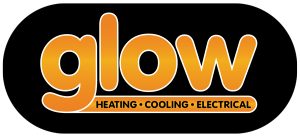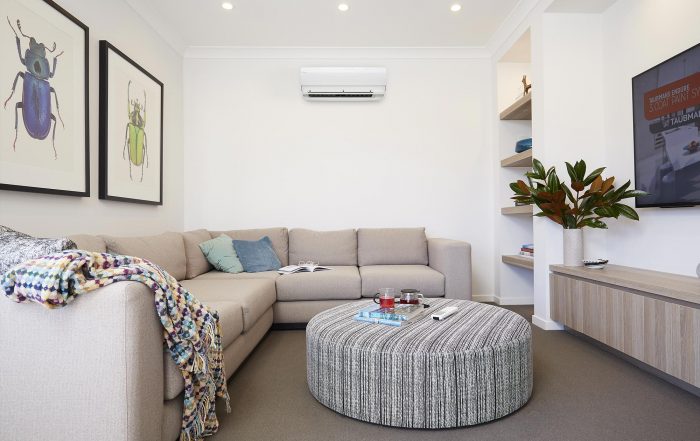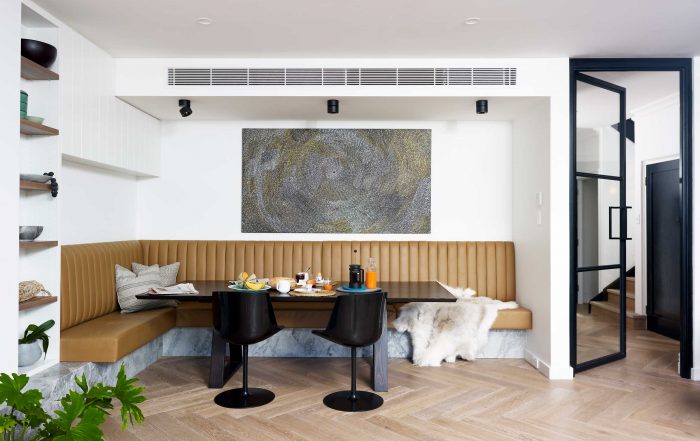Now that you’ve decided on a ducted reverse cycle system for your home, it’s time to choose the right make and model for your needs. This is where we can help! With so many systems and features to consider, the choice can be overwhelming. This handy guide will help!
Preparing your home for ducted air conditioning
Before choosing which make and model is right for your home, it’s important to address all the passive changes you can make in order for your ducted reverse cycle air conditioner to perform efficiently and economically. Think of it as optimising your home’s energy efficiency. Ensure that your home is appropriately insulated and as draught-proofed as possible. This may mean bumping up the insulation in your roof, installing roof vents, sealing windows, or shading windows from summer sun. It’s also important to consider your neighbours when selecting and locating external components as some units are noisy in operation.
What’s a good starting point?
There is no one-size-fits-all solution when it comes to ducted reverse cycle air conditioning. The right size, design, and ducting layout depend on a range of factors that have to be determined by qualified and experienced suppliers. If you live in South Australia, contact Glow to arrange a free consultation in your home. Glow will carefully consider the size and layout of your home, your individual needs and your budget before providing you with the best options for your individual situation.
What does ‘reverse cycle’ actually mean?
Reverse cycle air conditioners work on a heat pump principle, which simply means that they pump heat from one place to another. Here’s how it works:
- A fan draws hot air from your home over a cold liquid called ‘refrigerant’. Heat is absorbed from the air, cooling it. The air then flows back into your home.
- The refrigerant, warmed from the hot air, evaporates and flows into a compressor, which creates a high-pressure, high temperature gas.
- This gas is then pumped through a heat exchanger outside your home, which allows heat to escape and the refrigerant to cool and liquefy again.
- The refrigerant flows through an expansion device that lowers its pressure, cooling it further, so it can absorb heat again.
- Reverse-cycle air conditioners, as the name suggests, can reverse this process and be used for both cooling and heating.
Which system is best for me?
There are a few essentials you’ll need to take into account when looking at installing a brand new ducted reverse cycle air conditioner in an existing house. It’s helpful to have all of the following details before you start shopping around for quotes and designs:
- Your home’s floor plan:
- How many levels are there?
- What are the dimensions of the rooms?
- What is the ceiling height?
- Which direction do the rooms face?
- The size, position and orientation of windows and doors
- The type of construction (for example, weatherboard or brick veneer)
- The level of insulation
- The number of people living in your home
- The main use of each area (for example, cooking, sleeping, living).
- The ceiling cavity space – small duct systems (slimline) are available for homes with small ceiling spaces
- The limitations of your outdoor spaces –the outdoor compressor unit needs to be installed somewhere where noise won’t be an issue for you or your neighbours
- Large systems may require a three-phase power supply, which will be an extra installation cost if you don’t already have it
Which features should I consider?
Zones: Most reverse cycle air conditioning systems allow for a home to be divided into zones for convenience and economy, so that you can turn on the air conditioning for only the part of the house you want cooled or heated rather than the whole house.
Vents: These come in a variety of designs and can be installed within ceiling or walls. Slimline vents are available for homes with small ceiling spaces.
Controls: These are usually hard wired and mounted on a wall. You may have one controller for the entire system, but in a large house you might choose to mount extra controllers throughout your home for added convenience. Features will vary from controller to controller so make sure you look carefully at the specs once your quote comes through.
Sensors: These are used by the controller to keep the room at the set temperature. Large, open-plan areas may need multiple sensors.
Once you have received your quote, we encourage you to visit manufacturers’ websites to look at feature and specifications in greater detail.
Air conditioner ducting
The ducting and cover is a key component of any ducted reverse cycle air conditioning system. Ducts need to be thermally efficient so that valuable cooling or heating doesn’t escape between the air conditioner unit and the target room. Some suppliers are installing inferior ducting so we urge you to check that the ducting in any quote for your ducted reverse cycle air conditioner uses meets the Australian standard for ductwork, AS 4254. Also check the labels on the ducts and/or get a written statement of compliance to make sure you get the right quality of ducting.
Running costs
The running costs of your ducted reverse cycle air conditioning system depend on the following:
- The type and size of your system
- The energy efficiency of your system
- The length of time you’re operating the system for
- The construction of your home (floor plan, level of insulation, size of windows, etc.)
- The electricity tariff you’re on
- The temperature you set on the thermostat: each degree Celsius lower/cooler you set it to in summer, and each degree higher/warmer in winter, will increase the running costs by 10-15%. As a guide to best practice, set the temperature to 25 degrees in summer, and 20 degrees in winter.
Make the investment
A ducted reverse cycle air conditioning system is a substantial investment for your home, but it is really an investment in long-term comfort, energy efficiency, ease of use and versatility. It will pay to do some research before shopping around for quotes. There may even be some offers available to you when you purchase brands such as Daikin, Brivis and Rinnai. Contact us when you are ready for an experienced and qualified supplier to visit and assess your home.



